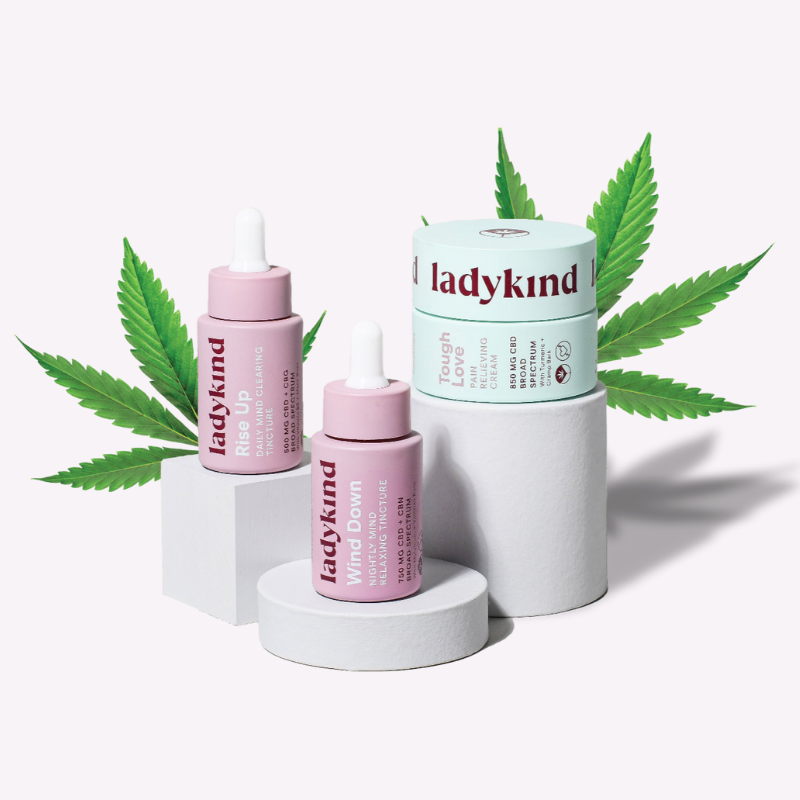Falling under the umbrella of women's health, it's only right that Endometriosis Awareness shares the month of March with International Women's History Month. Although the celebratory season is coming to a close, we thought the former was deserving of a closer look under our spotlight.
Did you know that one in every ten women worldwide suffers from the symptoms and side effects of endometriosis? Are you one of them?
If you or someone you love is affected, rest assured. In addition to recommending you consult with your doctor, we're going to cover everything in this article you need to educate and equip yourself with tangible solutions.
What is endometriosis?
Endometriosis is a painful condition resulting from tissue that mimics the endometrium growing outside the uterus. It forms and breaks down the same way your uterus lining does each month. The problem is it has no path to leave the body since it lives outside of the uterus.
It can cause painful (enough to make you vomit) and excessive periods, unrelenting fatigue, digestive issues, pain during sex, infertility, and general pelvic pain around the time of menstruation, taking "that time of the month" beyond a simple inconvenience for its victims.
Although most women find relief once they reach menopause, for some who experience it severely, symptoms can continue to persevere, giving the disorder a literal lifetime of opportunity to wreak havoc on your mind and body.
How do I know if I'm affected?
To diagnose you with endometriosis, your doctor will need to perform a series of tests that may include a pelvic exam, ultrasound, MRI, or laparoscopy. Depending on your diagnosis, treatment options will involve medication (pain meds, supplemental hormones, or fertility treatments if you're trying to get pregnant), or surgery (laparoscopic or traditional, such as a hysterectomy/oophorectomy).
Treatment options
Most people aren't thrilled at the idea of either of these solutions. Pain meds come with a host of risk factors and side effects, including addiction, brain fog, and constipation. And surgery... well, no one is ever excited to have surgery.
Luckily, there's a third alternative that may just be your best bet in managing these debilitating symptoms while you sort out a long-term solution. Our recommendation?
CBD self-care
The vagina contains a significant amount of endocannabinoids (or cannabinoid receptors) that play a big part in fertility. Their functions are also linked to estrogen levels, which we know drop around the time of menstruation. This is what causes common PMS symptoms such as cramping, bloating, and mood swings.
CBD works by attaching itself to the endocannabinoids in your uterus to address this hormone imbalance and provide relief from distress caused by conditions such as endometriosis.
How to make the most of it
The quicker and more consistently you can start incorporating CBD into your self-care routine, the better you'll be able to experience its benefits. If you implement a regimen before your next period arrives, you give the compound an ideal runway to work its magic. Consistency is key when it comes to balancing your hormones into a healthy, sustained state of homeostasis. This can be achieved with sublingual tinctures, drinks/edibles, and topical products that contain CBD oil or extract.
But if you've never tried it before, where should you start?
Ladykind offers four, safe and highly effective CBD products that cater to supporting your reproductive health. Our luxurious self-care products are fueled not only by the finest quality and expertly-crafted broad-spectrum CBD, but are also blended with other active power ingredients such as ancient Ayurvedic herbs, maca root, vitamin B5, valerian root, and melatonin; each offering a unique angle on relief for the range of needs of the female body and mind.






